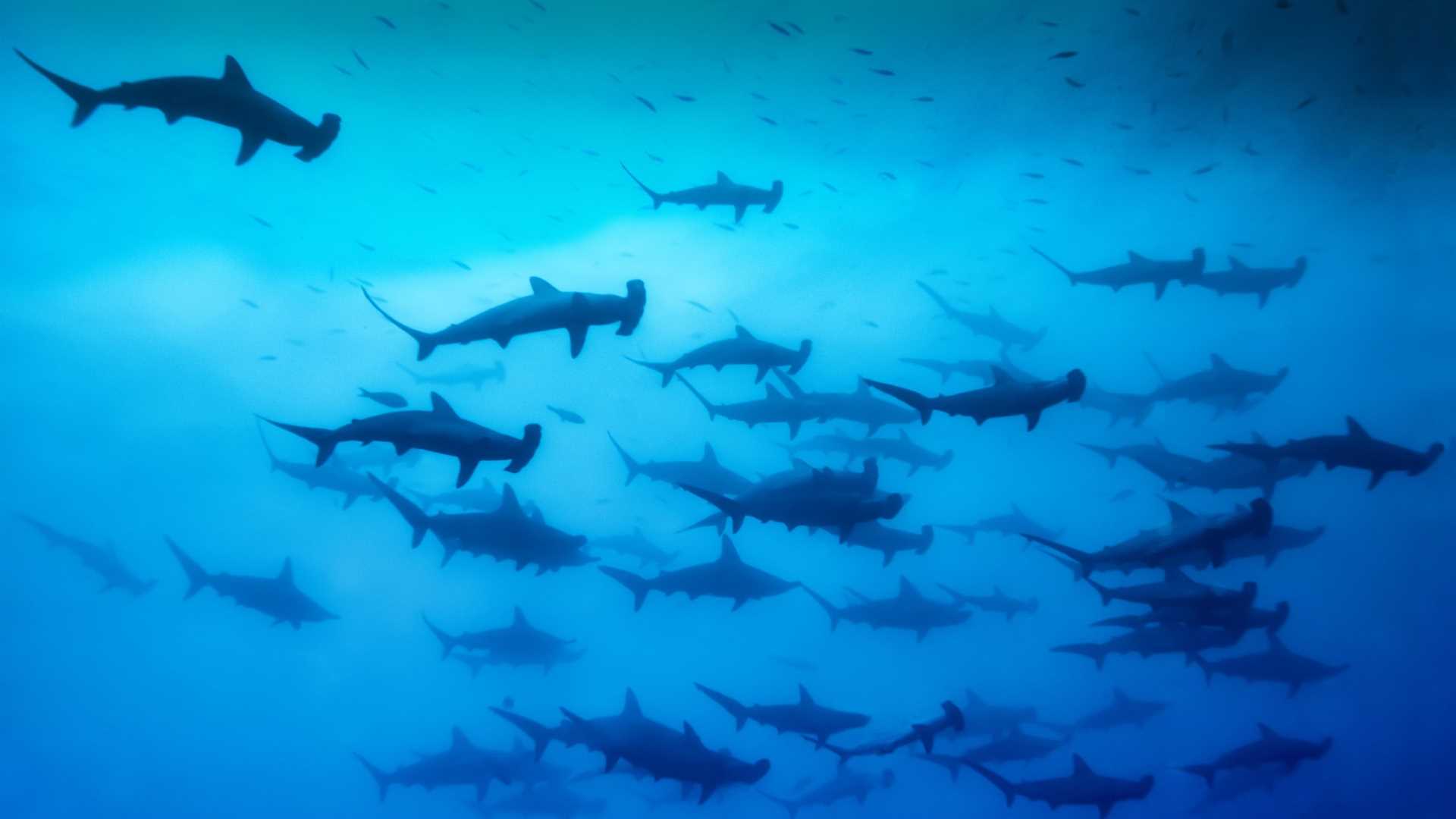Sharks are majestic swimmers, apex predators, and resilient ancient animals, first appearing more than 350 million years ago and surviving the extinction of the dinosaurs. Nowadays, more than 400 shark species swim the world’s waterways, including every ocean as well as many rivers and even some freshwater lakes—but there’s no better place to witness these graceful animals in motion than around the Galápagos Islands. “The Galápagos have been called the sharkiest place in the world,” says Emma Ridley, a Lindblad naturalist and marine biologist who has been living and working in Galápagos for more than 25 years. Get Inspired By Photos, Videos, Webinars, Stories, And Exclusive Offers. Sign Up
At last count, 32 species have been identified in the area. So, why are these islands such a draw for all these sharks? According to Ridley, it’s due to the nutrient-rich waters. “Even though Galápagos is on the Equator, there’s a cold current coming from the south and warmer waters coming from Panama in the north. From the west, the Cromwell Current or Equatorial Undercurrent brings very cold, nutrient-rich water,” she explains. “Depending on where you are in the archipelago, you have very different marine conditions, and that combination of strong currents from various directions makes it an oasis for sharks."
For travelers to the Galápagos, sharks rank among the most hoped-for animal sightings, competing with the islands’ famous endemic species like giant tortoises, marine iguanas, and Darwin’s finches. In fact, shark spotting generates so much excitement among travelers to the islands, it’s been estimated that each individual live shark is worth upwards of $360,000 annually to the area’s economy.
Around the archipelago, visitors have the chance to spot white-tipped and black-tipped reef sharks along with Galápagos sharks and the much smaller Galápagos bull shark. Snorkelers might also be lucky enough to encounter a scalloped hammerhead shark with its instantly recognizable silhouette.
If the idea of swimming among sharks sounds a bit nerve-racking, keep in mind the sharks here aren’t fazed by the presence of humans—just like almost every other species you’ll meet in the islands. They simply go about their daily business under water. If you happen to get in their path they’ll likely move right around or move away as you get a thrilling close-up look.
For all their apex predator power, sharks are far more vulnerable to humans than the other way around and they’ve long been victims of rampant overfishing worldwide. To protect the islands’ shark populations, the Ecuadorian government formally created the Galápagos Marine Reserve (GMR) in 1998, extending the protected area around the islands to 50,000 square miles. The GMR bans large-scale industrial fishing vessels, and at the time it was created, it was the second largest marine reserve after the Great Barrier Reef. In March 2016, Ecuador created a new marine sanctuary—one of the world’s largest—around the islands. The size of Belgium, the sanctuary surrounds the northern islands of Darwin and Wolf, home to the world’s largest biomass of sharks.
"Sharks are crucial for the survival of other marine species and of entire ecosystems," says Ridley. "If the top predators like sharks disappear, then many other medium size fish that sharks prey on will disappear. Those fish tend to graze on other things that keep reefs healthy, so it can cause all kinds of imbalances in the ecosystem."
That’s why it’s so critical to raise awareness of local conservation efforts like the influential work being done by the Charles Darwin Foundation (CDF). Through the CDF’s Sharks Project, researchers study the migration patterns of the Galápagos’ shark species to determine how well the Marine Reserve is protecting them, and to learn how climate change and other factors may threaten their habitats. These studies help lead to effective management plans that ensure the sharks long-term health.
Guests aboard Lindblad expeditions to the Galápagos can help amplify these efforts by donating to the Lindblad Expeditions-National Geographic Fund, which supports the work of conservationists and researchers like Early Career Grantee Salome Ursula Buglass. Last year while studying uncharted seamounts aboard the National Geographic Endeavour II, Salome and her team (which included ocean researchers from the National Park, MIT, and the National Geographic Society) discovered two species of cow sharks new to Galápagos—the broadnose sevengill and the bluntnose sixgill.
The Fund also supports the CDF’s Shark Ambassador Program. Launched in 2017, the program gets young Galápagos residents aged 12 to 17 involved in hands-on marine projects that teach the importance of ocean and shark conservation—and inspire them to carry this critical mission into their lives and into future generations.
So if you’re thrilled at the prospect of seeing sharks in a thriving habitat, put Galápagos on the top of your must-visit list.




